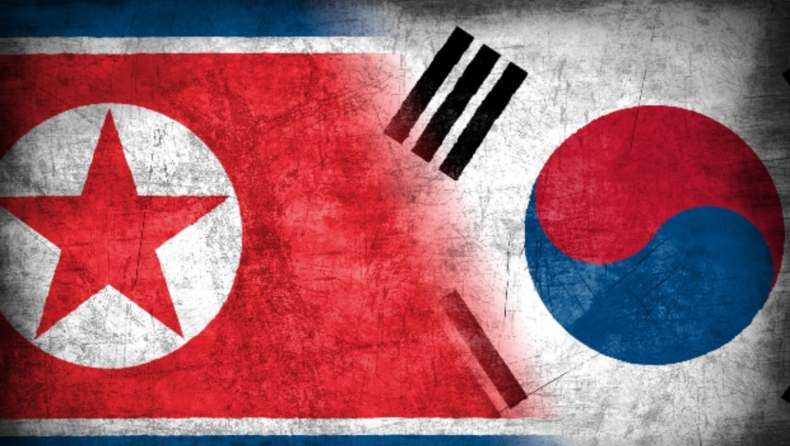
The Unification Ministry of South Korea declared there is no possibility that South Korean balloons could have exposed North Koreans to the virus.
On July 1, North Korea made the extremely dubious assertion that their COVID-19 epidemic started in people who had contact with balloons flown from South Korea. This claim seems to be an effort to hold its competitor accountable amid rising tensions over its nuclear program.
There is no probability that North Korea would have acquired the virus through South Korean balloons.
For years, activists used balloons to cross the border to disseminate millions of propaganda flyers. They are critical of North Korean leader Kim Jong Un. North Korea has frequently voiced its rage at the activists as well as the South Korean government for failing to stop them.
The coronavirus is spread by close contacts inhaling airborne particles. It occurs more frequently inside in stuffy, poorly ventilated settings than outside. According to South Korea’s Unification Ministry, there is no probability that North Korea would have acquired the virus through South Korean balloons.
A protracted deadlock in U.S.-led negotiations to convince North Korea to give up its nuclear aspirations. It was in exchange for economic and political rewards. It has left relations between the Koreas tense. In light of its rash of weapons tests this year, South Korean and U.S. authorities have stated that North Korea is prepared for its first nuclear test in five years.
The epidemic prevention center of North Korea discovered illness clusters in the town
North Korea`s epidemic prevention center discovered illness clusters in the town of Ipho, close to its southern border with South Korea. According to a report in the official media and some Ipho residents with feverish symptoms travelled to Pyongyang. Two people who had contact with “foreign entities” in the town in early April—an 18-year-old soldier and a 5-year-old kindergarten. Then tested positive for the omicron version.
Further, pandemic prevention center issued what it referred to as “an emergency directive”. It orders personnel to “vigilantly deal with foreign items coming via wind and other climatic phenomena and balloons”. This is near the inter-Korean border and identify their exact sources. It emphasizes the need for anybody discovering “foreign stuff” to alert police immediately so they may be taken away.
The “alien objects” are not made explicit in the reports. However, placing the blame on items that are flown across the border is probably a way for the government. It is to allay public concerns about how it handled the pandemic. While reiterating its concerns about the growing activities of North Korean defectors and activists in South Korea, according to observers.
No public balloon launched in the first few days of April
The South Korea’s previous liberal administration implemented a rule making leafleting campaigns illegal. Leafleting efforts essentially came to an end. So, no public balloon launched in the first few days of April.
After stopping them for a year, an activist is currently under prosecution for his actions. He sent balloons carrying propaganda flyers across the border in late April. In June, Park Sang-hak flew balloons twice. They swapped the materials in the payload from balloons to COVID-19 relief supplies. Such as masks and medications.
The police are still investigating the recent leafleting activities by the activist, Cha Duck Chul. He is a deputy spokesperson at the South’s Unification Ministry, told reporters on Friday.
Cha also said the consensus among South Korean health officials and World Health Organization experts is that infections via contact with the virus on the surface of materials are virtually impossible.
North Korea has made questionable claims about COVID-19
North Korea has made questionable claims about COVID-19. It includes the virus may be transmitted by migrating birds or snowfall. Even the entry of saltwater strictly prohibited as part of its pandemic-related limitations.
According to analyst Cheong Seong-Chang of South Korea’s Sejong Institute, North Korea wants its citizens to believe the coronavirus originated from leaflets, US cash, or other items transported across the border by the balloons.
Cheong predicts that anyone smuggling such South Korean goods into North Korea will face severe punishment. In addition, he added, North Korea may attempt to shoot down approaching South Korean balloons. It would provoke South Korea to retaliate and dramatically inflame tensions between the two nations.
The leafleting effort aims to challenge Kim’s totalitarian leadership over a populace with limited access to the outside world. As a result, North Korea is furious about it. South Korea retaliated with fire in 2014 when North Korea shot at propaganda balloons that were travelling into its territory. But no one was hurt.
As per outside perception, the virus spread after North Korea briefly reopened its northern border with China to freight traffic in January. It further increased after a military parade and other significant events in Pyongyang in April. This is contrary to North Korea’s most recent announcement on the virus. According to some foreign observers, Kim is primarily to blame for the spread. Since he planned such events to increase support for the Kim family’s rule amid economic challenges.
North Korea finally acknowledged the COVID-19 outbreak
After claiming for more than two years that it was coronavirus-free. North Korea finally acknowledged the COVID-19 outbreak on May 12 . The country stated that an undisclosed number of people in Pyongyang had been diagnosed with the omicron strain.
Of its 26 million people, North Korea has subsequently reported around 4.7 million instances of fever. But only a small number of these have been confirmed to be COVID-19. The death toll is listed as being at 73, which is incredibly low. Both individuals are allegedly being controlled by North Korea in an effort to keep its citizens cautious about the virus . It is also to shield Kim from any political fallout.













